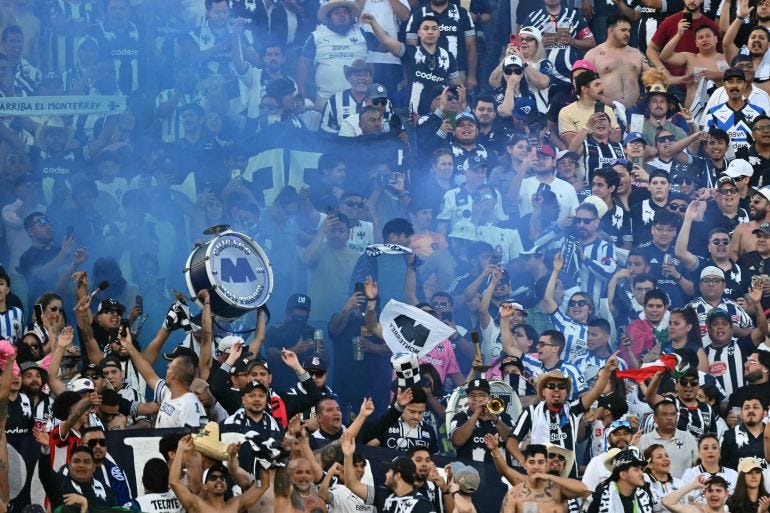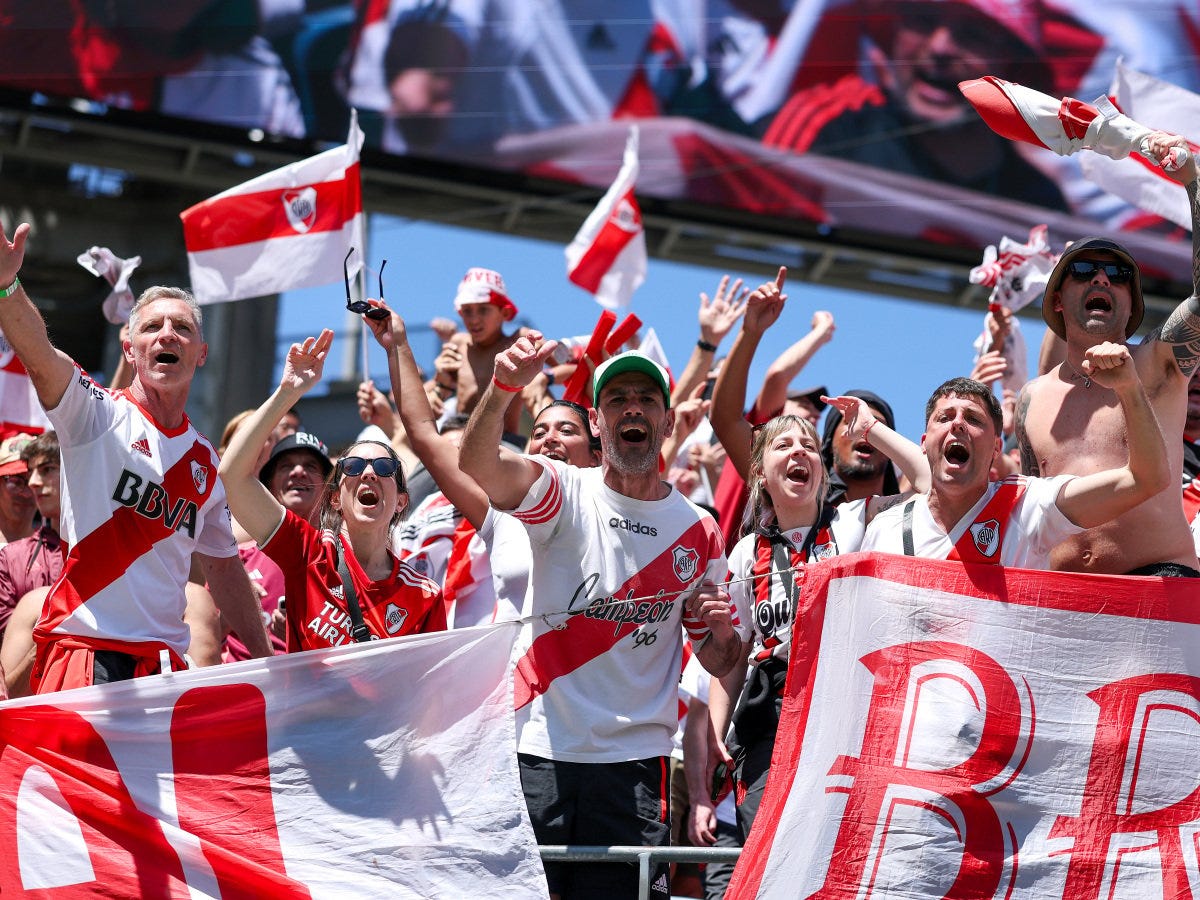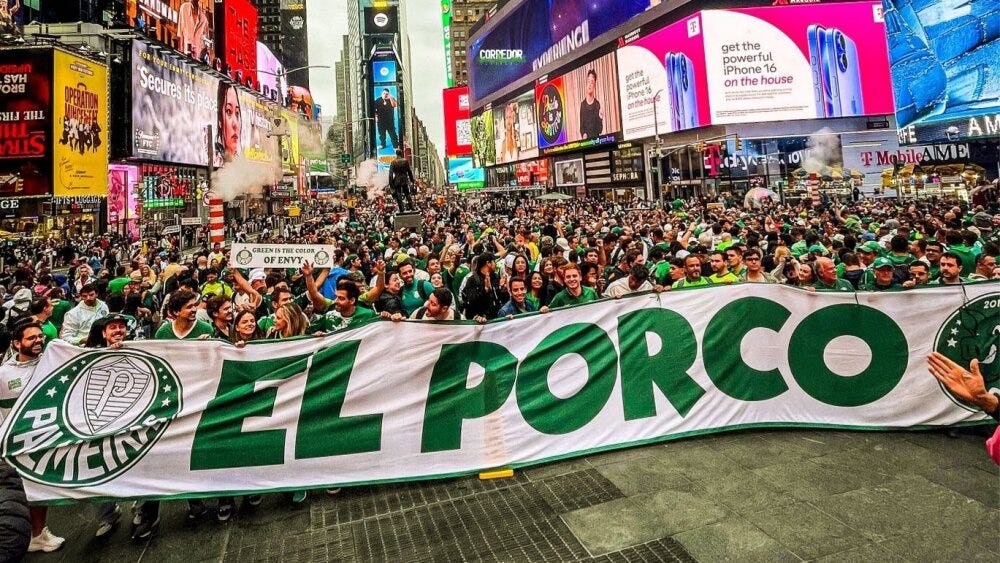How have South American clubs and fans defined football as a microcosm of our society in international football events?
Serie 1: Understanding traditional fans in football x FIFA CLUB WORLD CUP25.
Context.
Club Cultural Identity and Marketing of South American Clubs, creating a fellowship of fan connections and clubs.
All this was due to the Brief History of Global Tours & Cultural Diplomacy: Club Nacional de Football. In 1925, Uruguay's Club Nacional toured Europe, playing 38 matches across nine countries and selling an estimated 800,000 tickets. They acted as cultural ambassadors for a small nation that had just won Olympic and World titles. Their style ("dribbling's, fast… sprints") contrasted British physicality, showcasing how football embodies the national character and soft-power projection.
The reason why South American clubs often embody deep-rooted social identities is that they market these identities to global audiences. Class and cultural origins, as well as political symbolism, are woven into their brand stories.
South American football is not just a game. It's a microcosm of society. Matches reveal the continent's unique cultural identity, social tensions, collective pride, and political undercurrents, underscoring the profound cultural significance of football in South America.
Any football businessman who tries to gentrify our beautiful, traditional fans will fail, just as the Super League has.
The game of the people.
Football fans are not part of the digital wave; they are the people who embody culture through their presence.
So far, what would the atmosphere be like for this World Cup without the participation of the South American clubs?
NB: Nothing bad. The USA will adopt football, also known as "soccer," as a soft power tool to protect its legacy in U.S. sports, as seen in the transformation of Inter Miami FC into a Hispanic club with a marketing bias, from players to fans, to become the capital of soccer in the USA where FIFA will set up to follow the political agenda.
Story: FIFA Club World Cup, River Plate vs FC Monterrey: The benchmark game.
I had goosebumps and joy watching a Mexican club face an Argentine club, compared to European clubs like PSG and Real Madrid, which have a considerable history of winning and a legacy in football on their respective continent.
Even one of my friends messaged me to ask if I was watching the game,
Of course, I am watching it.
The South American and Hispanic crowd, which included more than 80,000 fans, filled the stadium at the Rose Bowl in Los Angeles, and "rocking" was the appropriate word.
I anticipated an atmosphere filled with raw football, intense energy, and engaged players, each leaving their last breath on the field to not disappoint the fans' support. The chants of 'VAMOS' and 'Aguante' echoing in the stadium were a testament to the emotional intensity that defines South American football fandom.
No way to let the working-class folks who live for "el futbol" in the stands down.
I was locked in ⚽🫂✍🏾. I grabbed my laptop to share a call out to the industry.
#Football is spoken in Latin languages, which is why the most successful World Cup nations
Argentina, Brazil, France, Italy, Uruguay, and Spain—all of which speak Romance languages foster a rich linguistic tradition in football.
They sing without stopping for 90 minutes, raising their banners, flags, and hands in the air while some hold cups and drinks.
I was delighted to learn that football is not about reaching a digital audience to fill the stadium. Ishowspeed or other influencers cannot charm Latino fans into buying tickets for a game or sport with an Emotional and artistic connection to them.
They are not fans by commerce but by culture! ⚽🫂🎬, which refers to a tribal and inherited identity that often begins in childhood.
The FIFA president attempted to persuade people to buy tickets by employing a million-dollar marketing strategy that involved collaborating with social media football content creators while overlooking the country hosting the tournament (the USA), which lacks a soccer culture.
Many sports organizations, such as FIFA, must focus on football as a taxonomy of spectators' identities, which I refer to as 'the fan types difference.' This approach emphasizes the diverse ways fans engage with the sport, from emotive intensity to economic contribution, and highlights football's unique and profound cultural significance in South America.
I hope FIFA will take note for the next edition:
Their marketing efforts on fan behavioral attendance should focus on traditional fans who are showing just football love or attachment, to offer football pilgrimage accommodation packages that address concerns about value for money (such as Airbnb for stay✅, ticket dynamic pricing test to premiums, and official transport partners, which include visa process, flights marketing destination to easy the movement of the fans worldwide… ).
But, Inclusivity is not just a buzzword.
It's the key to preserving the cultural integrity of football in South America, as well as in the tier countries of Africa and Asia. The diaspora's enthusiastic participation, uniting fans from diverse backgrounds, is a clear indication of the sport's profound cultural roots.
# They are not just fans but the soul of their clubs: Attendance and football will never die with Latinos/Hispanics.
However, I would describe South American fans based on the four types of fans I witnessed during my experience attending and working during football games, observing fans, and seeing people's reactions on social media about football.
South Americans and Hispanics are traditional spectators because they have the deepest emotional investment in a football club or tournament, a bond that resembles the love of a family member. This profound connection is a testament to the unique and profound cultural significance of football in South America, as well as the depth of their engagement with the sport.
For example, Boca Juniors supporters have been filmed on Miami Beach chanting and drumming, while Palmeiras fans decked out in green and white even "light up Times Square" in New York.
# FANDOM +FANBASE
When the passion is in the perspectives, the assertiveness of football will be replicated on the pitch; this goes for all South American clubs like Boca Juniors, Bafotogo, Fluminense, and Palmeiras, which were extremely vocal, taking over big palaces like Times Square in New York regardless of the strong presence of the South American diaspora/born in the U.S.
South Americans are the mix of fandom and fanbase during this World Cup that every sports tournament organizer could dream of:
Fandom: defined by fellowship.
- Emotional Intensity: The deep, almost ritualistic attachment in sports is evident through chants, drumming, expressions of grief at a missed tackle, or sheer ecstasy when a goal is scored.
- Rituals and Identity: Fans express their identity by painting their faces in the club's colors, learning traditional chants, and traveling to matches alone or in small groups, even when few others accompany them.
Fanbase that will define fanism.
– Scale of fans: The most fantastic part is the number of women (couples, grandmas, ladies, families with kids from different cultural backgrounds) from Brazilian, Mexican, and Argentinian clubs who attend, with the established global wind of passion reshaping how games are marketed and experienced.
That combination has brought the FIFA Club World Cup:
1. Electrifying Fan Presence: Culture Over Geography and Proximity.
2-Diaspora Power & Global Mobilization.
South American fandom brought numbers, stadium atmospheres, drums, chants, and rituals, transplanting the home stadium vibe onto U.S. turf. If you look beyond the socio-political matrix and expression that football has shaped in this region, it is rooted in Faith and football.
By the way, the presence of a strong Brazilian, Mexican, and Argentine diaspora in the U.S. greatly aided their representatives' clubs, which significantly shaped the tournament's fandom and ticket sales.
It was not intentional for FIFA to choose those South American clubs to participate. Still, the opportunity for multiculturalism's legacy and football heritage in the sport offers more than any other.
Takeaway: They saved the chaos of a $50M marketing budget for a multi-channel blitz designed to ignite interest, from mass-reach billboard placements to granular influencer engagement and targeted pricing incentives.
Monterrey vs. River Plate and all other South American clubs' games weren't just regular football matches but rather cultural events. It was a living case study of diaspora-fueled atmospheres and fandom-scaled attendance. It set the standard for what global club football can achieve outside of home turf, providing a blueprint for storytelling, fan engagement, and strategic market leverage.
These examples demonstrate how South American and Hispanic fan groups abroad transform international matches into expressions of their home identities. Large expatriate populations (in the U.S., especially) view the Club World Cup as a rare chance to see their teams and favorite players, such as Real Madrid, PSG, and Messi, live on foreign soil, mixing football passion with cultural pride.
Much love to all fans, sports business, and football lovers worldwide.
Paul Stanislas Dioh.







